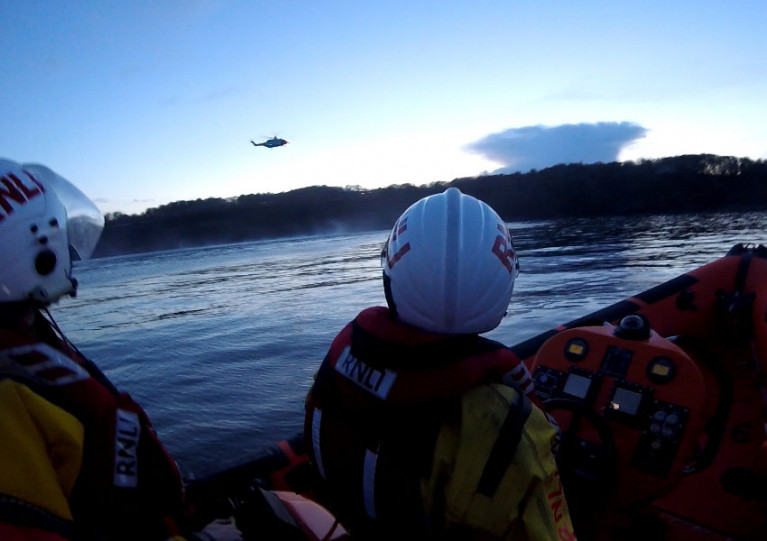Skerries RNLI’s volunteer crew had a busy weekend responding to calls to stranded walkers on Friday (22 January) and a missing swimmer today (Sunday 24 January).
Shortly before 4.30pm on Friday afternoon, Dublin Coast Guard tasked Skerries RNLI following a call from An Garda Síochána reporting that a number of people had been cut off by the rising tide on Barnageeragh beach.
The lifeboat was launched and proceeded to the area indicated, where the crew quickly spotted one adult and three children at the base of the cliff above the waterline.
While the casualties were uninjured, conditions underfoot in the area were very poor due to a large number of submerged rocks covered in seaweed and algae.
Following a consultation with members of the Skerries Coast Guard unit who were at the top of the cliff, it was decided that due to the falling temperatures and rapidly fading light, the safest option would be to request the assistance of the Dublin-based Irish Coast Guard helicopter Rescue 116.
A crew member stayed with the casualties to reassure them and keep them calm until the helicopter arrived and winched them aboard.
Then today, Sunday 24 January, the volunteer crew were paged shortly after 12.30pm following a call from a concerned family member when a swimmer in Skerries had not returned at the expected time.
The lifeboat launched immediately and made its way around the headland to the swimming platform known locally as The Springers.
Upon arrival it was quickly established that the swimmer had since made it safely ashore. They were well equipped for cold water swimming and required no assistance. The lifeboat was stood down and returned to the station.
Speaking about the callouts, which came a week after the town’s first of the year, Skerries RNLI’s Gerry Canning said: “Friday afternoon was a fantastic example of how well all the emergency services work together, with full-time emergency service personnel and volunteers working alongside each other seamlessly to get the best possible outcome.
“Thankfully the call for the swimmer on Sunday was a false alarm with good intent. We encourage anyone who thinks someone may be in difficulty in or near the sea to dial 999 or 112 and ask for the coastguard. The earlier they make that call the better.”































































